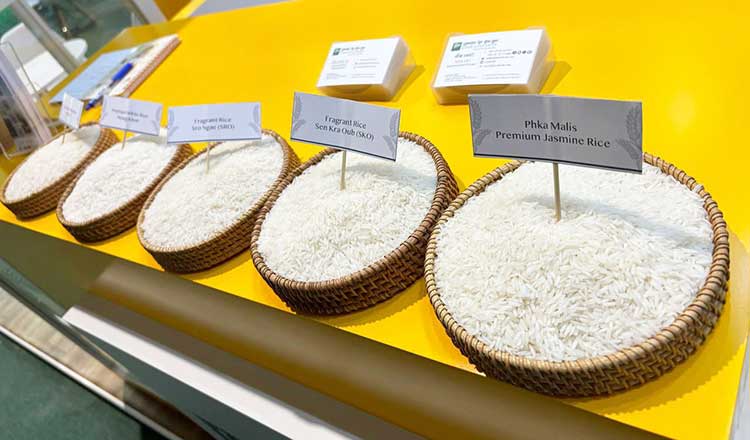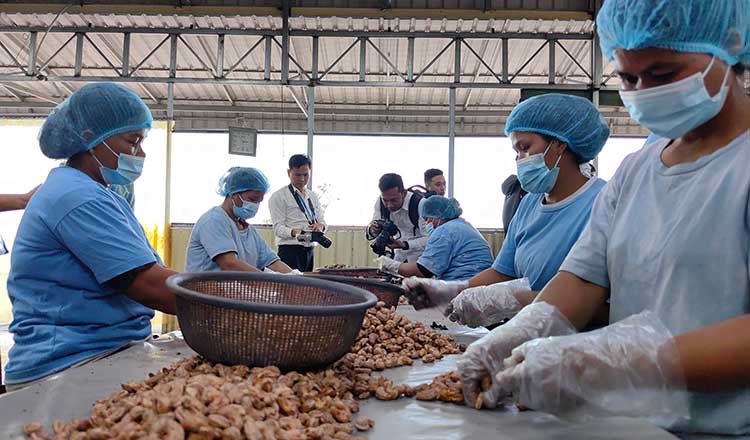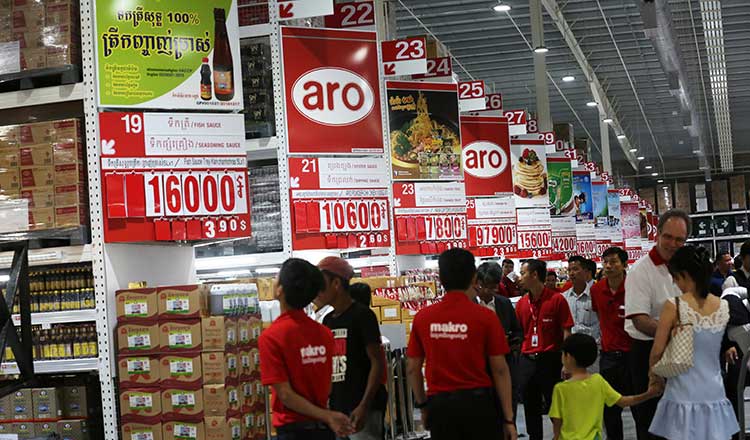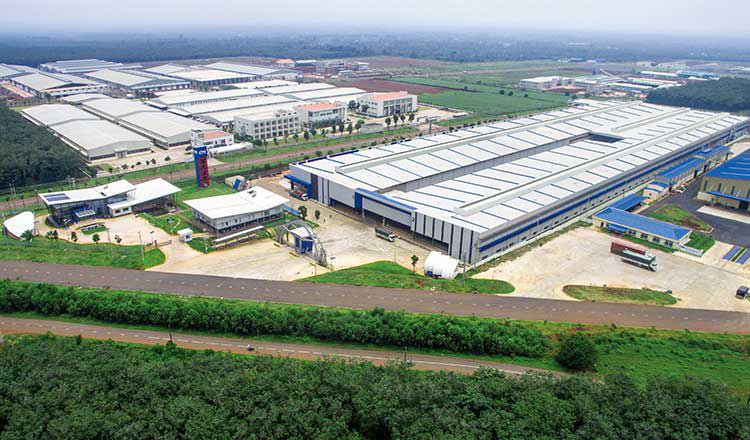NBC sanguine despite some banks posting losses in 2023
NBC sanguine despite some banks posting losses in 2023
Given the bleak scenario of banking sector globally, it won’t be an exaggeration to say that banks in Cambodia are relatively resilient. A string of factors including the slowdown in real estate and global macroeconomic factors contributed to the economic slowdown worldwide. While it will be an uphill task for other economies to recover, in Cambodia springs of optimism have already surfaced with NBC Governor Chea Serey maintaining that this was a challenging environment to operate which could help spur improved economic activity in 2024
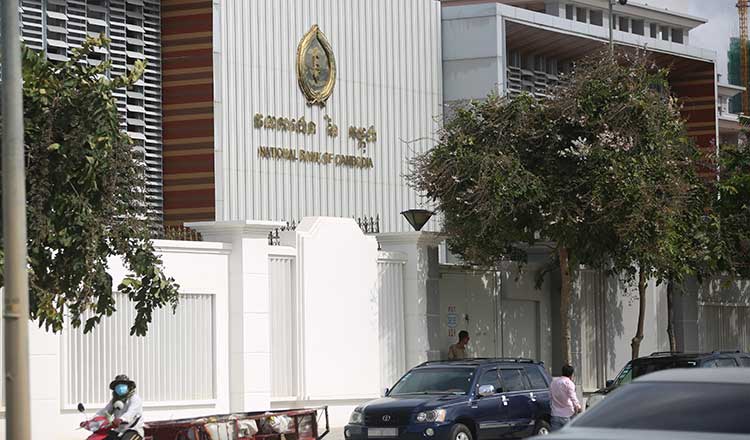
As many as 18 commercial banks in Cambodia posted losses in 2023 as the banking industry recorded its slowest credit growth in two decades. Of the 58 commercial banks in the Kingdom, the remaining 40 posted profits or flat growth.
The real estate slowdown in Cambodia saw the banking industry grow only 4.8 percent to $57.6 billion in 2023 – its lowest in two decades – as banks scaled back their lending. Apart from the domestic real estate market, global macroeconomic factors were also at play such as the economic slowdown worldwide post-Covid-19, the ongoing-Russia-Ukraine war and rising geopolitical tensions between the US and China.
With borrowers under repayment stress, non-performing loans (NPL) also increased. In 2023 its NPL rates went up to 5.4 percent from 3.2 percent in 2022, as per data with the National Bank of Cambodia (NBC). In January, NBC Governor Chea Serey said NPLs had risen slightly over the last two years due to the impact of the pandemic and deceleration in loan growth.
Among commercial banks in Cambodia that posted top losses, one was a foreign-owned bank which posted 2023 losses of $85.5 million and another bank, which is a subsidiary of a large conglomerate in Thailand, posted $48.9 million in losses.
In the top-six loss makers for the year, there were foreign-owned banks and local banks posting losses that ranged between $22.5 million to $18 million. Other commercial banks that were in the top 10 posted losses between $7.9 million to $1.9 million.
Banking industry experts say that there have been loan write-offs and restructuring to manage the loan crisis in the real estate industry. While the NPL situation is manageable, bankers say heightened NPLs have unfortunately led to a decrease in profits across the board. Even NBC Governor Chea Serey in her remarks in January said that this was a challenging environment to operate in, but there has been improved economic activity in 2024, which could result in loan growth this year.
In the Annual Financial Stability Review report 2023, NBC said the country’s banks have increased risk and exposure to real estate with banks’ exposure to construction and real-estate related sectors at one-third of total credit exposure.
Industry insiders say the sector has been showing signs of recovery and there should be a decrease in NPLs in 2024. In its annual report, NBC said, “Banks and financial institutions in the country have remained healthy and helped in contributing to the economic recovery. The total assets of the banking system increased by 8.6 percent, while customer deposits grew 13.1 percent.”
The growth in customer deposits in 2023 is an indicator of trust in the banking system. In 2022, banks and financial institutions provided loan restructuring for 183,117 accounts (a 49 percent decrease year-over-year) with a total value of $3.3 billion (a 38 percent decrease year-over-year). This was to help relieve the financial burden of borrowers affected by the Covid-19 pandemic and the floods in 2022.
Will it pose risk to economy?
The Cambodia banking industry facing systemic risks due to the real estate crisis and rising NPLs has led to concerns in some quarters. As per a research report by Yuanta Securities (Cambodia), “Cambodia’s banking industry seems over-indebted, leading to concerns about the local banking industry being highly over-saturated.” Key indicators, such as total Credit (percentage of GDP) has been recorded at 195 percent; credit non-financial at 188 percent and domestic credit to private sector at 177 percent.
While on the surface of it these numbers might look alarming, analysts say that Cambodia’s case is unique. The private sector’s debt level relative to GDP for Cambodia has to be adjusted against the country’s substantially larger informal economy and significantly smaller government final consumption expenditure.
“Such anomalies can make Cambodia’s GDP appear much smaller than that of other countries thereby making the country’s ratio look much greater compared to that of other countries. But after factoring in necessary adjustments, it would seem that its private sector debt is manageable,” said the report from Yuanta Securities.
The report said, “Cambodia’s level of private sector debt remains relatively lower compared to more advanced economies in Asia, such as Thailand, Malaysia, Singapore and South Korea.”
External risks
While Cambodia’s overall private sector debt is lower than its peers, still the indebtedness of the financial sector would make it susceptible to external shocks, said analysts.
Take the case of Thailand, where debt levels rose steeply in the 1990s. This was followed by a painful correction in the second half of the 1990s; which was further exacerbated by the Asian financial crisis triggered by sudden outflows of capital from foreign lenders. This would not be an apples-to-apples comparison, but an apples-to-oranges one. Cambodia is fundamentally different from Thailand. Cambodia’s private sector almost solely relied on credit from the domestic banking industry while Thailand’s private sector back then was heavily reliant on credit from overseas lenders. But still, the stark example of Thailand shows how high private-sector debt can prove risky to a country’s banking system.
The report said, “It is important for Cambodia’s banking sector, as the major domestic lender, to be mindful of the growth rate and maintain a sustainable ratio moving forward. For example, the local private sector still has room for a double-digit growth of 10 percent for the next five years and then grow at the expected rate of nominal GDP growth of approximately seven percent while maintaining the adjusted ratio at around 140 percent.”
Sustaining future credit growth rates similar to the past five-year average of 20 percent may no longer be feasible or advisable, said the report adding, “The current situation calls for a long-term oriented approach, shifting focus towards qualitative rather than purely quantitative growth. By adopting responsible and cautious approach, relevant stakeholders may mitigate potential risks and ensure the stability and health of Cambodia’s banking industry and overall economy.”
Lowest growth
Because of the real-estate slowdown, Cambodia’s banks have massively scaled back their lending. The banking system saw 4.8 percent loan growth in 2023, marking its lowest in two decades.
“While it can be observed that the growth rate of loans of commercial banks in Cambodia can be positively influenced by GDP growth rate, it can also be negatively influenced by management decisions on lending and asset quality,” said Lim Siphat, researcher, CamEd Business School to Khmer Times.
Outside of the real-estate crisis, there have also been other factors at play affecting the banks in the region. This includes a sluggish global economy, the Covid-19 pandemic, the ongoing Russia-Ukraine war and rising geopolitical competition between US and China resulting in trade wars.
As of December 2023, the country had 58 commercial banks, nine specialised banks and 87 microfinance institutions (MFIs), and saw its credit growth reach $57.6 billion in 2023. The number of financial institutions in a country that is small, means room for high competition — more players wanting the same slice of the cake.
Industry participants say Cambodia’s banking market is highly competitive and the rise in interest rates over the last two years has coincided with a slowing of deposit growth.
Despite scaling back their lending, banks continue to lend to the real-estate and construction industry. For 2023, when it came to year-over-year growth, the highest loan growth was posted by retail trade at 17.6 percent, followed by mortgages at 13.4 percent, and wholesale trade at 9.1 percent. This was followed by real estate seeing 10.5 percent and construction seeking 9.8 percent.
This was followed by higher lending activity in agriculture (9.1 percent year-over-year) and personal loans (9.3 percent). Other sectors such as hotels, restaurants, manufacturing, transport and storage saw loan growth between 2.9-5.2 percent.
When it came to NPLs, it wasn’t just banks that posted a high NPL ratio of 5.4 percent, the microfinance industry also saw the impact and reported an NPL of 6.7 percent. Non-performing loans (NPLs) have posted a sharp increase, with provisioning against loans also rising in tandem, said NBC in a report.
Year-over-year, the highest increase in NPLs was seen in retail trade (19.5 percent), construction (10.2 percent), agriculture (9.8 percent) and real estate activities (9.6 percent). This was followed by an increase in NPLs (year-over-year) in wholesale trade (8.6 percent), mortgages (7.9 percent), personal loans (7.5 percent), manufacturing (3.3 percent) and mining and quarrying (0.8 percent).
Commenting on NPLs across the industry, the NBC Governor said that while the NPL situation is manageable, the increase in NPLs leads to a decrease in profit. This makes it challenging to accelerate loan growth in support of economic activities. The Governor also noted that there has been a rise in private sector debt but it is manageable.
Industry participants say that the reports from NGOs and foreign media over the high-level of indebtedness of Cambodians are largely exaggerated. While there are cases of extreme indebtedness, most customers continue to repay loans in a prompt and timely manner, said industry players.
Slowing credit growth has also been impacted by Cambodia being a dollarised economy. Because Cambodia remains largely dependent on the dollar, inflation in Cambodia resembles price trends in the US. With the cost of goods increasing, consumers on average would have discretionary income, leading to reduced spending. This in turn would lead to less large asset purchases like real estate and cars that require credit.
Banks on the other hand are seeing higher deposits, higher US interest rates leading to increased costs for banks. For 2023, there was a 13 percent increase in outstanding deposits to $47.9 billion. Current assets in the banking system grew 8.6 percent to $84.3 billion.
Because an increase in deposits – while signifying more trust in the banking industry – also means additional costs for banks; as the interest they pay out to depositors is their liability; while the interest they earn from lending becomes their income.
Household loans
With bank credit growth reaching its lowest in two decades in Cambodia, households’ mortgage loans posted weak growth in 2023, as per an NBC report. This also has to do with the allocation of loans by banks.
In its Annual Financial Stability Review report 2023, NBC said, “Lending activity by banks seems primarily directed to the private sector with corporates getting nearly three-fourths of total credit.
Which means for households and other segments there is only one-fourth allocation of loans.”
When it came to year-over-year loan growth, banks lent more for personal loans, agriculture, retail trade, transport and storage activities. There was continued loan activity towards real-estate and construction, but at a slower pace than earlier, as per the NBC report.
NBC also noted that in this environment, net profits have plummeted, amid higher provisions and increased interest expenses. Of 58 commercial banks in Cambodia, as many as 18 commercial banks posted losses in 2023; and the remaining 40 posted profits or flat growth. The NBC also noted that there has been a sharp dip across the banking industry on return on assets (RoA) and return on equity (RoE). While RoA is a measure of profitability that looks at how much profit a bank earns from its assets such as interest on loans, dividends on securities, property, etc; RoE looks at a bank’s return for shareholders by dividing net income by shareholders’ equity.
When it comes to dollarisation and its impact on Cambodia there might be some near-term relief. The US Federal Reserve increased interest rates 11 times between March 2022 and July 2023.
And since there have been no additional increases ever since, the expectation is that rates will decrease if inflation remains under control.
The IMF has projected Cambodia’s economic growth at 6.1 percent, fuelled by a recovery in tourism and manufacturing, while inflation is expected to be at three percent. The Central Bank, however, has been more optimistic in its projections and expects growth of 6.4 percent and inflation at 2.5 percent.
Speaking to Khmer Times recently, Khou Vouthy, NBC Director General of the General Directorate of Policy and International Cooperation, said that banks can expect to see more positive growth in 2024 as the country is showing signs of recovery, adding that industries affected by Covid-19 and macro conditions like tourism, garment exports and construction are improving and this would have a positive impact on the overall financial landscape.





